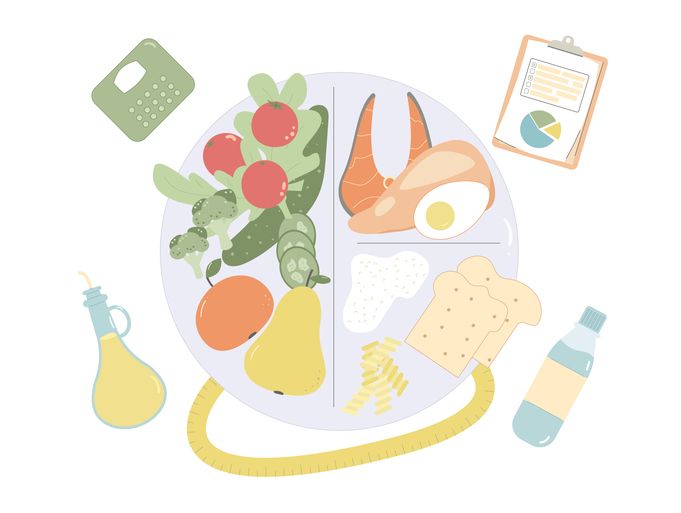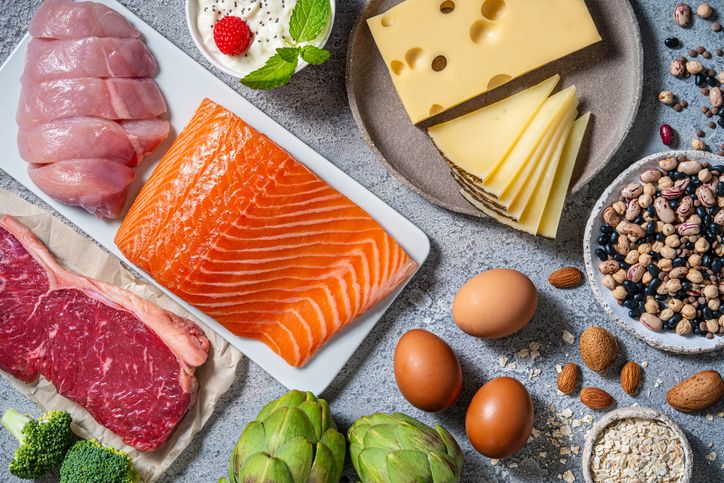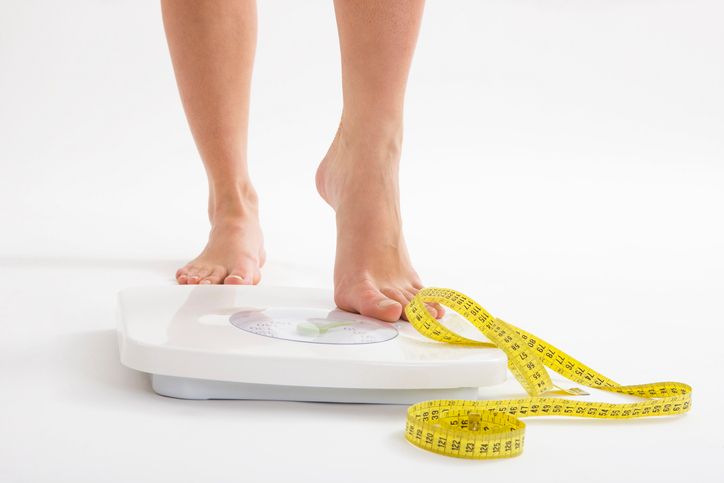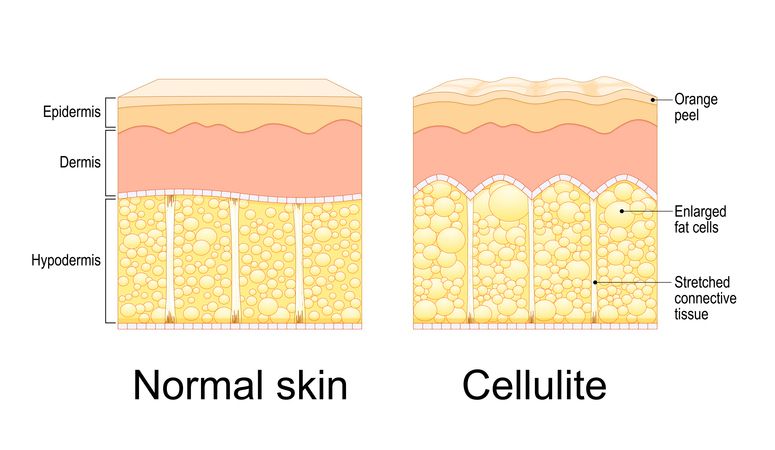
Author: Natalie Ng|Updated: 12 May 2025
Trying to lose fat but don’t want to bulk up? A lot of people are after the same thing—getting lean without putting on extra size. The trick is getting the right amount of protein without overdoing it. A good range for most people who work out a few times a week is around 0.8 to 1 gram of protein per pound of body weight. That’s enough to help you lose fat, keep muscle, and avoid that bulky look. It also helps keep you full and supports your energy levels without pushing your calorie intake too high. The way you spread out your protein intake during the day matters too. Eating high protein foods at the right times, like after a workout or before bed, can make a difference. You also want to stick to lean options and make sure you’re not eating too much protein overall. This article breaks it all down into simple steps to help you get your protein right for fat loss without the bulk. Keep reading for easy ways to make it work with your daily routine.

Calculate Your Optimal Protein Intake for Fat Loss

Start with your body weight
To figure out your ideal protein intake for fat loss, begin by using your current body weight. A simple guideline is to eat around 1.76 to 2.2 g/kg of protein if you’re moderately active. If you train more intensely or often, aim for closer to 2.2 to 2.64 g/kg of protein. This range helps support lean body mass while you lose weight.
Keep muscle, lose fat
If your goal is fat loss without losing muscle, consuming protein is crucial as it helps avoid muscle loss while staying in a calorie deficit. Higher protein intake also helps with protein induced satiety and may reduce cravings, making it easier to stick to your nutrition or diet plan.
Track your protein intake
Use a simple food tracker to check your daily protein consumption. Look at both your total calorie intake and the grams of protein per meal. If you feel unusually tired, hungry, or notice you're losing strength, you might need more protein.
Adjust based on progress
As your weight changes, so should your protein range. Recheck your numbers every few weeks to make sure you're still on track. Keeping the right amount of dietary protein in your plan supports better body composition and prevents weight regain.

Time Protein Intake Throughout the Day

Protein timing supports fat loss
Balancing your protein intake isn’t just about how much you eat—it’s also about when. Consistent protein consumption throughout the day can enhance diet induced thermogenesis (DIT), leading to greater energy expenditure. For fat loss without bulking, your body benefits from consistent protein consumption throughout the day, with extra focus on two specific times: after a workout and before bed. These timing strategies help improve protein absorption, support recovery, and reduce body fat while keeping muscle mass.
Post-workout protein timing
The idea that you have to eat protein immediately after exercise has been exaggerated. Research shows that while post-workout protein intake supports recovery and muscle repair, you don’t need to rush. You can eat your post-exercise meal within a few hours and still get the benefits.
What matters more is your total daily protein intake. Make sure you're eating enough protein per kilogram of body weight, and spread it evenly across meals. Aim for around 20 to 30 grams of protein in each meal to support muscle protein synthesis and keep your body in fat-burning mode.
Pre-sleep protein benefits
Eating protein before bed may help preserve lean muscle mass and support fat loss overnight. During sleep, your body enters a repair phase, and a steady stream of amino acids from protein can support recovery and reduce muscle loss.
Good pre-bed protein choices
• Casein: Digests slowly and provides a steady release of amino acids
• Greek yogurt: High in protein and convenient
• Cottage cheese: Natural source of casein
• Whey protein: Absorbs quickly but still effective if timed right
Aim for 20 to 30 grams of protein around 30 minutes before bed. Choosing high protein foods that digest slowly helps you maintain energy balance and improve muscle repair, even during rest.
Read More
Book Now to Experience
S6 Body Sculpting Treatment
1 Minute Self-Registration
Date should not be before minimal date

Choose Lean Protein Sources

Lean protein supports fat loss
Choosing the right type of protein, such as lean meat, is just as important as how much you eat. If your goal is fat loss without gaining bulk, focus on lean protein sources. These options offer more protein per calorie, which helps you stay in a calorie deficit while still meeting your protein needs. They also help preserve muscle mass and reduce body fat during weight loss.
Best lean protein options
Look for high protein foods that are low in saturated fat and calories. Animal-based and plant-based sources can both work well in a high protein diet.
Animal-based options
• Skinless chicken breast
• White fish like cod, tilapia, or haddock
• Egg whites
• Turkey breast
• Lean cuts of beef or pork (like tenderloin)
• Lean meat such as skinless chicken breast, turkey breast, or lean cuts of beef or pork
• Tuna (fresh or canned in water)
Dairy and plant-based options
• Greek yogurt
• Cottage cheese
• Tofu and tempeh
• Protein shakes made with minimal added sugar
• Low-fat cheese or milk alternatives with added protein
These foods support higher protein intake without pushing your total calorie intake too high. They also keep your protein content high while limiting saturated fat, which helps manage body composition more effectively.

Match Protein Intake with Exercise Intensity

Protein needs change with training load
Your protein intake for fat loss should reflect how hard you're training. Higher intensity workouts create more muscle stress, so your body needs more protein to recover and repair. On lighter workout days, you can reduce your protein slightly while still getting enough to prevent muscle loss.
After high-intensity training
If you’re lifting weights, doing interval training, or following tough workout routines, your muscles need more amino acids for recovery. Aim to eat around 20 to 30 grams of protein within a few hours after training. This helps support muscle repair without pushing your calorie intake too high.
You may also need to increase your overall daily protein intake slightly during periods of frequent intense training. A high protein intake can support lean body mass, improve recovery, and help reduce body fat.
During moderate or low-intensity activity
For steady-state cardio, yoga, or light resistance work, your body still benefits from consistent protein consumption, just not in the same amount. Space your meals evenly and include protein in each one to maintain a steady supply of amino acids.
On low-intensity or rest days, you can slightly lower your protein intake without losing progress. The key is to avoid low protein intake altogether, which can lead to muscle loss and slow your metabolism.
Matching your protein and amino acids intake to your activity level helps support fat loss while preserving lean muscle and promoting better energy balance.
Book Now to Experience
S6 Body Sculpting Treatment
1 Minute Self-Registration
Date should not be before minimal date

Balance Macronutrients for Fat Loss

Protein works best with the right mix of carbs and fats
While high protein consumption helps reduce body fat and prevent muscle loss, fat loss doesn’t rely on protein alone. A balanced mix of macronutrients—protein, carbohydrates, and fats—creates a better environment for body weight loss and long-term weight management.
If you only focus on protein and ignore your other macros, you may run into problems like low energy, poor recovery, or cravings that throw off your nutrition or diet plan.
Suggested macronutrient breakdown
For most people aiming to lose fat without gaining size, a good starting point is:
• 30–35% of total calorie intake from protein
• 40–45% from carbohydrates
• 20–25% from healthy fats
This balance gives you enough protein to support lean body mass while using carbs for energy and fats for hormone support.
Choosing the right sources
Carbohydrates
Pick complex carbs that digest slowly and provide steady energy:
• Brown rice
• Oats
• Quinoa
• Sweet potatoes
• Whole grain bread or pasta
Healthy fats
Go for unsaturated fats from nutrient-rich foods:
• Avocados
• Olive oil
• Nuts and seeds
• Fatty fish like salmon
Pairing protein with these nutrient-dense carbs and fats helps keep your meals satisfying while supporting a steady calorie deficit. Track your macronutrients using a food app if you’re unsure how your meals break down.

Monitor and Adjust Your Progress

Tracking helps you stay on course
To lose fat without gaining unwanted size, you need to track how your body responds to your diet and protein intake. Clinical evidence supports the importance of monitoring protein intake for effective weight management. This means paying attention to more than just your weight. Keep an eye on your body composition, energy levels, protein consumption, and how you feel day to day.
Regular check-ins help you figure out whether your current protein intake is helping with fat loss or needs to change.
What to measure and when
Tracking doesn’t have to be complicated. Focus on simple, useful data that you can check regularly.
Key metrics
| Measurement Type | Tracking Frequency | Purpose |
|---|---|---|
| Body Weight | Daily or Weekly | Spot overall changes in body weight |
| Body Measurements | Every 2 weeks | See where fat loss is happening |
| Protein Intake | Daily | Stay within your target range |
Use a notebook, app, or spreadsheet—whichever tool helps you stay consistent without adding stress.
Adjust as needed
If you’re not seeing progress after a few weeks, reassess your total daily protein intake and calorie intake in relation to the recommended dietary allowance. You may need to increase protein slightly if you’re feeling overly hungry, losing muscle mass, or not seeing enough fat loss.
On the flip side, too much protein can add extra calories you don’t need. Make small changes based on your progress to keep your energy balance and body weight loss on track. This keeps your plan flexible and more sustainable.
Book Now to Experience
S6 Body Sculpting Treatment
1 Minute Self-Registration
Date should not be before minimal date

Include High-Protein Snacks to Support Fat Loss

Snacking can support your goals
Snacking doesn’t have to derail your fat loss plan. In fact, choosing the right high protein snacks from among many high protein foods can help you stay full, manage cravings, and maintain steady energy levels throughout the day. This approach supports a high protein diet and helps you reach your daily protein intake without adding too many extra calories.
Smart high-protein snack options
Incorporate snacks that are rich in protein and low in saturated fat to keep your calorie intake in check. Here are some convenient options:
• Hard-boiled eggs
• Low-fat Greek yogurt
• Cottage cheese
• Tuna packets
• Edamame
• Protein bars with minimal added sugar
• Beef or turkey jerky
• Roasted chickpeas
These snacks provide essential amino acids and help maintain lean body mass while promoting weight loss. Including them in your nutrition or diet plan can make it easier to stick to your goals and prevent weight regain.

Protein Myths That Can Slow Your Progress

Not all protein advice is accurate
There’s a lot of noise around protein and fat loss. Some of it can actually work against your goals if you follow it without looking at the facts. Let’s clear up a few common myths that often confuse people trying to manage body weight or improve body composition.
Myth 1: More protein always means better results
Eating more protein than your body needs doesn’t guarantee faster fat loss, and low protein diets can also impact your energy balance and weight loss efforts. It can lead to higher calorie intake, especially if you rely heavily on processed protein shakes or high protein snacks that contain hidden fats or sugars. Stick within your target range based on grams per kilogram of body weight and total calorie intake to avoid weight regain.
Myth 2: High protein diets damage kidneys
This concern mostly applies to people with existing kidney disease. For healthy individuals, research shows that a high protein diet does not harm kidney function. If you’re worried, speak to a healthcare provider before making changes, but there's no need to fear dietary protein if you're generally healthy.
Myth 3: You need to eat protein right after every workout
The idea that there’s a short “anabolic window” after exercise is outdated. What matters more is hitting your daily protein goals and spreading it out. You don’t have to rush a protein shake the minute your workout ends.
Clearing up these myths helps you stay focused on strategies that actually work. The human body responds best to consistent habits, not extreme changes or shortcuts.

Support Fat Loss Goals with S6 Body Sculpting Treatment
A non-invasive boost to your fat loss journey
If you're focusing on protein intake for fat loss and working hard to manage your diet, you may still find it tough to reduce stubborn body fat in certain areas. This is where a non-invasive treatment like the S6 Body Sculpting Treatment can help.
While increasing protein intake and maintaining a calorie deficit support full-body weight reduction and muscle mass preservation, spot reduction through diet alone isn't always possible. The S6 Body Sculpting Treatment was developed for that exact reason—to assist in shaping specific areas that don’t respond easily to even the best high protein diet or workout plan.
How the treatment works
S6 uses a low-energy bio-laser that targets subcutaneous fat layers. The laser prompts fat cells to release fatty acids, which are then removed by the body through lymphatic drainage. At the same time, vacuum suction massage improves circulation and speeds up metabolism. This dual action supports faster fat breakdown and removal, making it an ideal complement to a high protein diet designed for fat loss.
Enhancing fat loss without bulk
If your goal is to lose fat and maintain lean body mass, combining this treatment with smart protein consumption (based on your body weight and energy intake) can enhance your results. A high-protein diet can help prevent metabolic syndrome while supporting fat loss. While dietary protein helps with muscle retention, treatments like S6 speed up the process of removing fat cells in stubborn spots such as the belly, thighs, and lower back—common areas where many struggle despite adjusting their protein intake.
Advantages of S6 Body Sculpting
• Targets seven major body parts where fat often lingers despite diet or exercise
• Non-invasive with no injections, surgery, or downtime
• Stimulates collagen for skin tightening, preventing sagging after fat loss
• Speeds up metabolism and supports body composition changes
• Safe for most body types, with sessions customized based on your shape and goals
Combining a high protein diet with the right treatment can promote weight loss more effectively than diet alone. If you're already adjusting your daily protein intake, this non-surgical contouring method can take your results further.
Book S6 today to support your fat loss goals with a treatment that works alongside your nutrition plan.
New Beauty's S6 Body Sculpting TreatmentBook Now to Experience
S6 Body Sculpting Treatment
1 Minute Self-Registration
Date should not be before minimal date
FAQ
1. Can I lose fat without eating high protein foods?
Yes, it’s possible to lose weight by maintaining a calorie deficit, but without enough protein, your body may break down muscle instead of fat. Low protein intake during weight loss often leads to muscle loss, slower metabolism, and poor body composition. Eating high protein foods supports lean body mass, boosts the thermic effect of food, and helps you feel full while consuming fewer calories. Additionally, higher dietary protein contributes to lowering food intake by influencing hormones that regulate appetite, marking a clear connection between food intake and effective weight management.
2. How much protein is too much when trying to lose weight?
Consuming more protein than your body needs can lead to increased calorie intake, especially if you're not tracking your food. While higher protein intake is useful for fat loss, going far above your ideal range (e.g., over 2.2 grams per kilogram of body weight daily) can cause digestive discomfort and may not provide extra benefits. People with kidney disease should also be cautious and consult a professional before increasing protein consumption.
3. Will eating protein at night make me gain fat?
Eating protein before bed will not make you gain fat if your total calorie intake remains within your goal. In fact, consuming slow-digesting protein at night can help prevent muscle loss and support fat metabolism while you sleep. This is especially helpful during a fat loss phase, when you're trying to preserve muscle mass and improve your overall body composition.
4. What are good high protein snacks for weight management?
Some of the best high protein snacks for fat loss include low-fat Greek yogurt, cottage cheese, boiled eggs, protein shakes, roasted chickpeas, edamame, and tuna packets. These protein-rich foods are low in saturated fat and support energy balance by helping you stay full and avoid overeating. They’re also easy to portion and fit well into a nutrition or diet plan focused on weight reduction.
5. Can a high protein diet help prevent weight regain after fat loss?
Yes, research shows that maintaining a high protein diet after weight loss helps prevent weight regain. Protein plays a role in regulating hunger hormones and increasing resting energy expenditure. By continuing to consume enough protein per kilogram of body weight after reaching your goal, you help maintain lean muscle and reduce the chances of regaining lost body fat.
Recommended Articles
COPYRIGHT© NEW BEAUTY MANAGEMENT LIMITED 2025. ALL RIGHT RESERVED.




